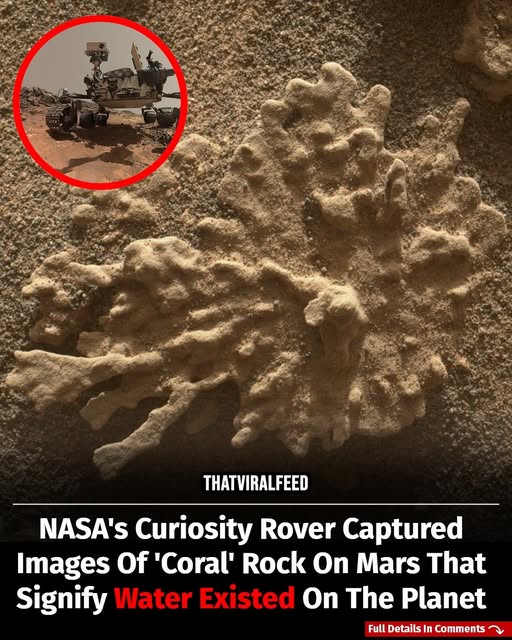The rock is quite small — roughly 1 inch wide (about 2.5 centimeters) — and is pale in color. According to Live Science, its surface has been shaped and smoothed by the wind over time. It was discovered in Gale Crater, a massive ancient impact basin on Mars that has long been a focal point for exploration.

The same camera — known as Curiosity’s Remote Micro Imager — has previously documented other similar formations. These recurring discoveries are another strong indication that Mars had liquid water flowing across its surface in the distant past.

“This common process, seen extensively on Earth, has produced fantastic shapes on Mars, including a flower-shaped rock.” the agency added in its statement.

Earlier this year, in June, Curiosity also captured images of another fascinating geological feature. This one has been nicknamed “spiderwebs” because of its strange, web-like network of ridges that resemble an insect’s design.
Much like the coral-shaped rock, these “spiderwebs” are believed to be the hardened remains of minerals left behind after ancient water once filled cracks and gaps in the rock.
“The Red Planet once had rivers, lakes, and possibly an ocean. Although scientists aren’t sure why, its water eventually dried up and the planet transformed into the chilly desert it is today.”
“Eons of sandblasting by Martian wind wore away the rock but not the minerals, revealing networks of resistant ridges within.”




